- Home
- H. R. F. Keating
Agatha Christie
Agatha Christie Read online
Contents
Acknowledgments
Introduction to the 2021 edition by Sophie Hannah
Introduction H. R. F. Keating
The Case of the Escalating Sales Elizabeth Walter
The Mistress of Complication Julian Symons
The Mistress of Simplicity Edmund Crispin
A Very English Lady Michael Gilbert
Cornwallis’s Revenge Emma Lathen
The Message of Mayhem Parva Colin Watson
The Christie Everybody Knew Celia Fremlin
The Christie Nobody Knew Dorothy B. Hughes
A Midas Gift to the Theatre J. C. Trewin
The Agatha Christie Films Philip Jenkinson
Music and Mystery William Weaver
Miss Marple – A Portrait Christianna Brand
Hercule Poirot – A Companion Portrait H. R. F. Keating
The Agatha Christie Titles
The Contributors
Copyright
Acknowledgments
All possible care has been taken in making acknowledgment for the use of copyright material in this book. If any owner has not been acknowledged the publishers apologize and will be glad of the opportunity to rectify the error.
Agatha Christie extracts reproduced by permission of HarperCollins Publishers Ltd. Come Tell me How You Live © Agatha Christie 1946; Unfinished Portrait © Agatha Christie 1934; Giant’s Bread © Agatha Christie 1930; Murder at the Vicarage © Agatha Christie 1930; The Road of Dreams © Agatha Christie 1925
Introduction to the 2021 edition SOPHIE HANNAH
Last year, I took part in a London festival’s panel discussion of the work of Agatha Christie. On the panel with me were four other writers, all passionate Agatha fans. One by one, we described what we loved about her work and talked about how much she meant to us. Then it was time for the Q&A, and the questions we were asked by the audience were, by and large, the same ones I’ve been answering on Agatha-themed panels since around 2011: why is she still the no. 1 bestselling novelist of all time? Is her work dated now or is she still relevant? Even though she’s widely and rightfully regarded as a plotting genius, wouldn’t the panel all agree that she’s not actually a very good writer, in a literary sense? In fact, wouldn’t the panelists agree that her prose style is wooden and her characters two-dimensional?
No, the panel would certainly not all agree. Or at least, I hoped they wouldn’t. In my mind, I fiercely disagreed with both of those suggestions as soon as I heard them, and I expected that my fellow panelists would too. I was rather surprised when each of them offered a response that was a sort of compromise: yes, we adore her; yes, her books are addictive and ingeniously plotted… but also, yes, we probably would not argue that she was the finest prose stylist or best novelist of all time.
I happened to be the last panelist to answer the question of whether or not Agatha was a good writer, beyond her plotting and storytelling abilities. This was a lucky coincidence, because when it was my turn to speak, what I said had the effect of a twist revealed at the end, as it were – and what could be more appropriate for a panel about Christie? I heard a few shocked titters and saw a few raised eyebrows in the audience when I said, in a manner that I can only describe as peak-denouement-revelation-style, a more diplomatic version of this: ‘You’re all gravely and heinously wrong! Anyone who suggests that Agatha Christie’s actual writing or prose style or novelistic ability is anything other than top-notch is a crazy fool! Not only is she a brilliant plotter and entertainer; she is also a writer of unparalleled excellence! No, not just a great storyteller – actually a great writer in a literary sense! Like Virginia Woolf! Like Charles Dickens! Like Shakespeare!’
Some audience members by now were on the edge of their seats. They had not expected anything like this to happen. Despite the event being a panel billed as a discussion about Christie featuring ardent Christie fans and no one else, the audience expected the normal formula: unanimous agreement that, despite her limitations as a writer, Christie was nevertheless a genius.
And there was I saying, ‘Yes, she was a genius – but, hang on, what limitations?’ Every novelist – every creative artist of any sort – has the limitations that they choose, of course. The art produced by the painter L.S. Lowry is limited in the sense that it contains absolutely no hedgehogs or giraffes. I used Lowry as an example in my answer on the panel that day, as a way in to talking about this common misconception in relation to Christie.
The fact that she wrote in a certain way, her chosen-on-purpose way, is used by some as evidence that she is not a good writer. Many say – indeed, audience members and panelists that very day said – that her characters are two-dimensional and flat, her prose style is wooden and simplistic. I pointed out that one might say that the people painted by Lowry were two dimensional and flat compared with those painted by John Singer Sargent, but that didn’t mean Lowry was any less brilliant or talented a painter or that his work was lacking in artistic merit. In its way, his work is as rich and rewarding as that of Sargent – and the same is true of Christie in relation to, for instance, Virginia Woolf.
Her style is not simplistic but, rather, beautifully simple. Her genius is such that she can write book after book that seamlessly blends many opposite ends of many spectrums: the straightforward and the complex, the light and the dark, the resolved and the ambiguous, the traditional and the revolutionary. She is brilliant at conveying depth of character in her own way: a brisk and crisp way that allows far more page space for plot than for introspection – yet we learn every time that it is only by following the precise details of the plot, major and minor, that we are able, finally, to access the third dimension of each character, the part they keep hidden from the rest of the world and from the reader for as long as possible. Without plot, there is no reliable access to character; Christie understood this as well as anyone.
There’s a passage in The Murder at the Vicarage, the first Miss Marple novel, that I always recite to anybody who questions the depth of characterisation or psychological insight in Christie’s work. The vicar’s wife says to her husband, ‘Agreeing to marry [you] made me feel so powerful… The other suitors thought me simply wonderful, and, of course, it would have been very nice for them to have me. But I’m everything you most dislike and disapprove of, and yet you couldn’t withstand me! My vanity couldn’t hold out against that. It’s so much nicer to be a secret and delightful sin to anybody than to be a feather in his cap. I make you frightfully uncomfortable and stir you up the wrong way the whole time, and yet you adore me madly.’
What if we were to regard Agatha Christie’s novel writing – the complete package and all the elements contained therein – as a style she chose and created on purpose rather than a limitation resulting from an inability to do better? What if we focused on what it did enable her to achieve rather than on what it prevented her from achieving – which, we can reasonably assume, was something she wasn’t aiming for in the first place? Wouldn’t that be radical and refreshing? At the panel event, I asked the audience this question. Some, I could see, were tempted to think about Christie in this new and different way. One woman raised her hand and said, ‘I’ve never actually read Agatha Christie – I’ve only ever watched Poirot and Marple on telly – but I don’t think she’s likely to be a proper literary genius like you’re saying because everyone says she’s not that good a writer and that she’s just good at plot. If that’s not true, why do so many people – even people who love her work – say she’s not a properly good writer?’
An excellent question. I had been wondering myself, since hearing my fellow panelists’ answers, how it was possible both to love and underestimate Christie simultaneously. And it was while I was thinking about this and wondering how
to answer the question that I had a true moment of revelation. I felt a little like Poirot when he suddenly says, ‘How could I have been so foolish and failed to see what was so obvious?’
Here’s the answer I gave at the event, and I’ve grown more certain of it ever since that day: people think Christie can’t be a literary genius because they know that’s what other people think. That is how we are all groomed and brainwashed and trained to think about her – and so, with a few exceptions, even those who adore her work succumb to the pressure of falling in line with the prevailing orthodoxy. If you don’t believe me, here’s a little experiment you can try out. Next time you’re with a group of highly educated and well-read people, find an opportunity to say, ‘I absolutely love Agatha Christie’s books – though obviously they’re only a bit of fun. I’m not saying she’s a great writer or anything.’ See if anyone expresses any consternation or even the slightest morsel of surprise.
Then try the experiment again with a different group of people, but this time say, ‘I love Agatha Christie, and I think she is one of the greatest literary geniuses the world has ever known – right up there with Dickens, Virginia Woolf and Emily Bronte.’ I’d be extremely surprised if you were not met with peals of incredulous laughter – because this is not what we are told to think about Christie, and, unfortunately, many people are extremely comfortable thinking only what they are told to think.
This, of course, was something Christie understood very well. Time and time again she had either Poirot or Miss Marple point out that if only people would learn to think properly – starting from first principles and using keen observation, a deep understanding of human nature and immaculate logic – then they too would be able to solve complex and cryptic murder mystery puzzles. The inability of most people to think with rational detachment is one of the key themes in Christie’s detective and crime novels.
All of which brings me to why I loved reading this volume of essays so much, and why I am delighted to introduce it to you. It was first published in 1977, a year after Christie died, and what’s so fascinating here is that every writer who contributed to the volume has something quite individual and different to say about Christie. Perhaps this is because it was too early, at that point, for any sort of orthodoxy or so-called correct set of views to emerge. Some of the pieces in this book focus on Christie’s personal life while others focus on her work, but there’s a real sense that everyone is writing precisely what they want to write and what they personally think and feel about Agatha. They are – to refer back to a point I made earlier – choosing their own limitations on purpose.
Reading these essays prompted me to ask myself what I would have written if I had travelled back in time to 1977, if I’d been asked to contribute an essay to this volume. I would probably have written a piece exploring an as-yet undiscovered link between And Then There Were None and Murder on the Orient Express. These are Agatha’s two most famous and bestselling novels (though I’m not sure if they were in 1977, so I might have needed some extra time-travelling allowance there)… and they also happen to contain the most powerfully come-uppance-deserving murder victims.
Could there be a connection between these two facts? Could it be that readers love And Then There Were None and Murder on the Orient Express so much partly because both are novels in which you can glean huge satisfaction not only from the solving of the crime and the restoration of order, but also from the murder itself – so that, in effect, you get a kind of double-justice buzz that scores twice the amount of points for the side of goodness against evil?
Yes, I think that’s the essay I would have written. But I was only six in 1977, so I had to wait forty-three years and write this introduction instead.
Introduction
Agatha Christie was a phenomenon. She took a fairly simple form of entertainment, moderately popular at the time, and through it she made herself into a name known from China (where they preached at her rather puritanically) to Nicaragua (where they put Poirot on a postage stamp), selling in the course of it all more books than anyone has been able to count, getting translated into no fewer than 103 foreign languages (fourteen more than Shakespeare), writing a play that has run on the London stage longer than any other work of dramatic fiction ever, becoming (to speak crudely for a moment) the richest writer Britain has ever had, going confidently on from one generation to the next (I myself learnt of her at my mother’s waist, if not knee; my children in turn have fallen victim to her wiles, as deceived as ever I was) and finally bringing to her art the same respectability that a knighted Irving brought to those actor rogues when, in 1971, she was made a Dame of the British Empire. She was beyond doubt the First Lady of Crime.
How did she do it? She lived an ordinary enough life; she was not in herself a particularly extraordinary person, though she was a more private one than most if hardly ‘a figure of mystery’. Yet she achieved truly extraordinary feats. A mystery! And the answer to that mystery lies, beyond doubt, in another mystery. A mystery in the ancient sense of ‘a handicraft or trade’. For, though her enormous success derived in part from our twentieth-century craving for easy images to grasp, so that ‘Agatha Christie’ became world-wide mental shorthand for ‘mystery books’, her writing itself certainly has exceptional virtues. A vessel that can take hurricane winds in her sails must be a sturdy barque indeed.
Her books, in common with almost all others of the kind, appeal of course to certain fundamentals shared by us all from Greenland’s icy mountains to India’s coral strand. They tickle that ‘passion for hunting something deeply implanted in the human breast’ which Dickens wrote of; their very nature proclaims, albeit entertainingly, that justice will prevail and evil can be conquered even by one man’s effort; in a world increasingly swept by the irrational they quietly defend rationality; they appeal with their inevitable answer to the question ‘Who done it?’ to our deep-buried feeling for form. Indeed, perhaps no other writer in the genre has given us so many times that click of satisfaction when many seemingly loose ends fall at last neatly into place as Agatha Christie. Not unknowingly did she contrive even that her eightieth title came to us on her eightieth birthday.
But such factors account only for the firm basis of her extraordinary success. Her particular triumph comes, I believe, from the very ordinariness that would seem to preclude it. A middle-of-the-road person herself, she wrote about people who possessed those qualities we almost all share. Even Poirot, with a good claim to be among the most eccentric of fictional detectives, is in fact a well-judged omnium gatherum of what the ordinary person might expect an eccentric to be. It is not without significance that many of her characters over the years were brought to life by comparing them to man’s friend, the dog – the lugubrious bloodhound, the persistent terrier.
Mrs Christie’s virtue was that she stuck to her last. She did not go beyond those aspects of human nature that are our common stock. Very seldom, if ever, did she deviate even by a hair’s breadth from the strict bounds that her story set for her, and that made her a splendidly direct and effective story-teller. She never succumbed to the temptation that lurks for every author in the popular vein, writers who in the nature of things are generally more gifted than the bulk of their readers, the temptation to shoot off one or two intellectual rockets, or a whole fusillade. She never tried to be clever in her writing, only ingenious in her plots. She knew, too, from the sympathy she had for ordinary people, at just what moment they needed each piece of information to build up the story she was telling. She served her public.
I see her in her writings as a circus clown, an entertainer linked magically to the surrounding spectators, and producing for them gifts essentially simple but none the less welcome for that. And welcome to all of us, save the most critical in their spikily critical hours. Out of the battered bowler hat or the conical cap comes the expected, long waited-for silk handkerchief – at exactly the right moment, in neatly the unexpected colour. We clap. We can’t help it.
Ye
t her mystery deserves a more prolonged consideration than this. Thoroughly to explain it we need a diversity of approaches. And that is what is presented here. It is fashionable in French intellectual circles currently – and there can be no more intellectual circles than those, nor any more fashion-conscious – to claim that the many-angled approach of many writers is the highest form of biography, the colloque. I hardly go as far as that in putting forward this combined look at the phenomenon of Agatha Christie, that least intellectual of persons. But it is perhaps true that her mystery is best solved not, alas, by the lone amateur detective but by the sober and concerted efforts of all the specialists a whole police force can bring to bear. Let us see then what solution they produce.
H. R. F. Keating
The Case of the Escalating Sales ELIZABETH WALTER
On 27 May 1926, two weeks after the end of the General Strike, when England was thankfully returning to normal and one or two of the forethoughtful were wondering if it would be worth saving for posterity copies of Churchill’s emergency British Gazette, an event of more enduring literary significance occurred: The Murder of Roger Ackroyd was published.
It was not Agatha Christie’s first novel, but it was the one which made her name, for the audacious ingenuity of its ending had critics and public divided on the issue of ‘Was it fair?’ It was also the first of her books to be published by Collins, and marked the beginning of an author-publisher relationship which endured for fifty years and well over seventy books.
When in the 1920s Sir Godfrey Collins and his editorial director, Mr F. T. Smith, began to build up a trade list in London for what had hitherto been a Glasgow-based publishing house chiefly distinguished for Bibles, educational books and the Collins Classics, they included among their early acquisitions a number of detective novels by authors such as Freeman Wills Crofts, G. D. H. Cole, Philip Macdonald, and others less well remembered. They sold satisfactorily. The up-and-coming publishers were therefore delighted when the literary agents Hughes Massie approached them with a script by Agatha Christie, an up-and-coming author who was already published by John Lane (Bodley Head). The script was so good that Collins eagerly entered into a three-book contract dated 27 January 1924, even though there were two books still to come from the Bodley Head. Two years later, The Murder of Roger Ackroyd was published at 7s 6d.

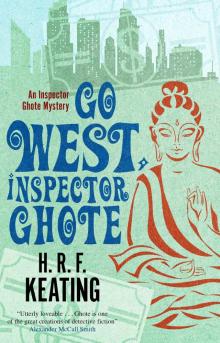 Go West, Inspector Ghote
Go West, Inspector Ghote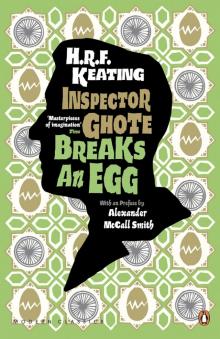 Inspector Ghote Breaks an Egg
Inspector Ghote Breaks an Egg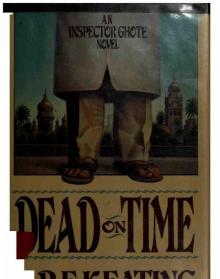 Dead on Time
Dead on Time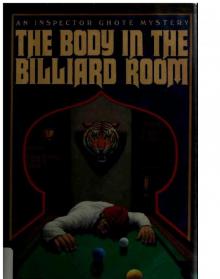 The Body in the Billiard Room
The Body in the Billiard Room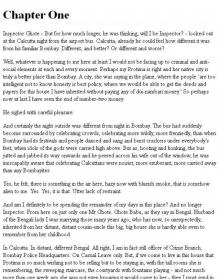 Bribery, Corruption Also
Bribery, Corruption Also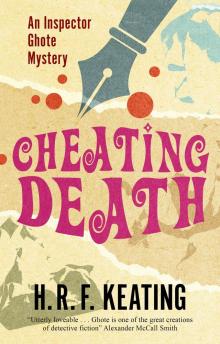 Cheating Death
Cheating Death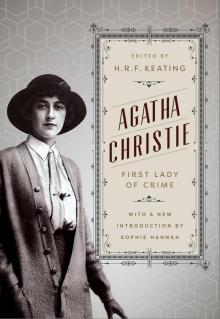 Agatha Christie
Agatha Christie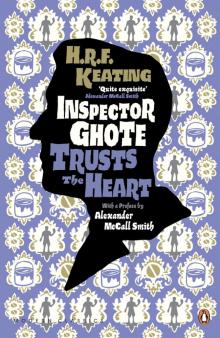 Inspector Ghote Trusts the Heart
Inspector Ghote Trusts the Heart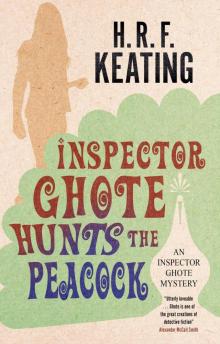 Inspector Ghote Hunts the Peacock
Inspector Ghote Hunts the Peacock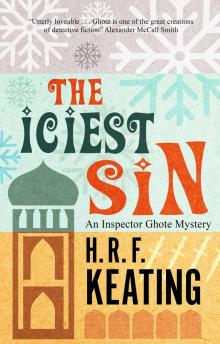 The Iciest Sin
The Iciest Sin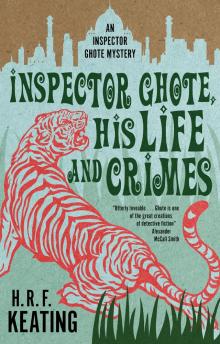 Inspector Ghote, His Life and Crimes
Inspector Ghote, His Life and Crimes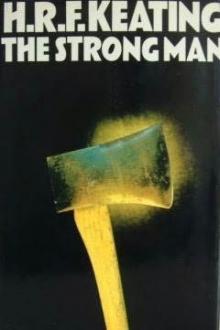 Strong Man
Strong Man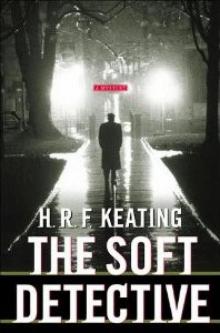 The Soft Detective
The Soft Detective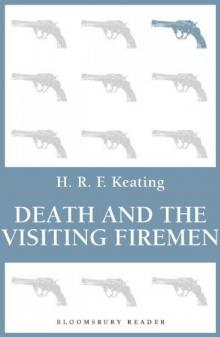 Death and the Visiting Firemen
Death and the Visiting Firemen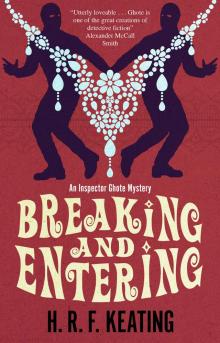 Breaking and Entering
Breaking and Entering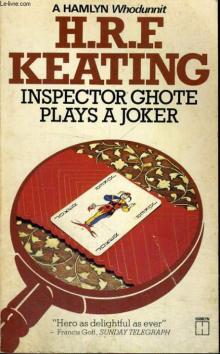 Inspector Ghote Plays a Joker
Inspector Ghote Plays a Joker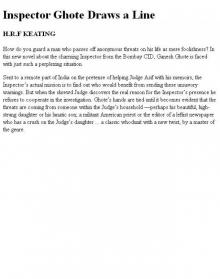 Inspector Ghote Draws a Line
Inspector Ghote Draws a Line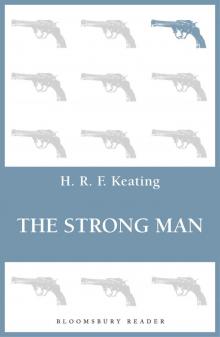 The Strong Man
The Strong Man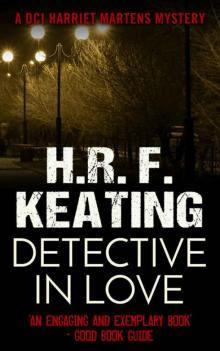 A Detective in Love (A Harriet Martens Thriller Book 2)
A Detective in Love (A Harriet Martens Thriller Book 2)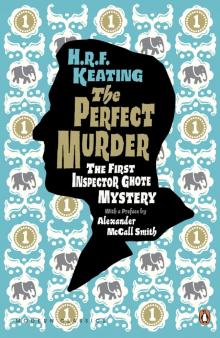 The Perfect Murder: the First Inspector Ghote Mystery
The Perfect Murder: the First Inspector Ghote Mystery Inspector Ghote's Good Crusade
Inspector Ghote's Good Crusade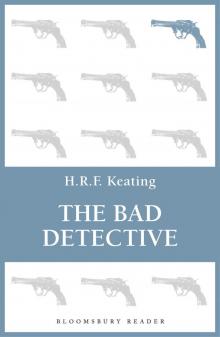 The Bad Detective
The Bad Detective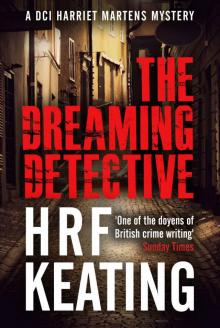 The Dreaming Detective
The Dreaming Detective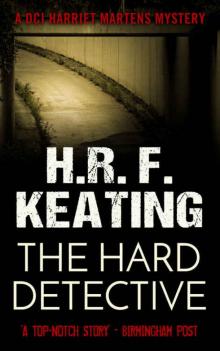 The Hard Detective (A Harriet Martens Thriller Book 1)
The Hard Detective (A Harriet Martens Thriller Book 1) The Dog It Was That Died
The Dog It Was That Died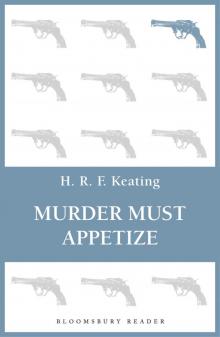 Murder Must Appetize
Murder Must Appetize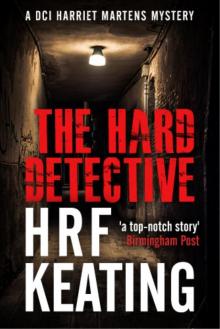 The Hard Detective
The Hard Detective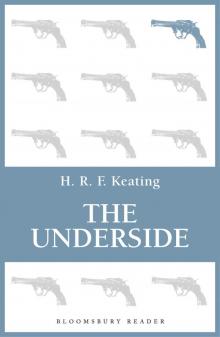 The Underside
The Underside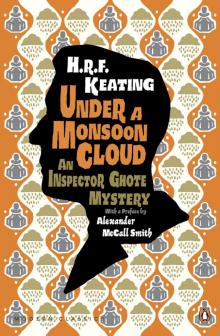 Under a Monsoon Cloud: an Inspector Ghote Mystery
Under a Monsoon Cloud: an Inspector Ghote Mystery Is Skin Deep, Is Fatal
Is Skin Deep, Is Fatal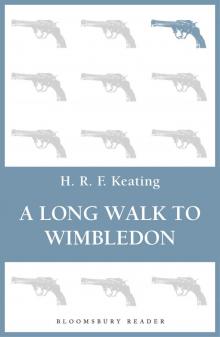 A Long Walk to Wimbledon
A Long Walk to Wimbledon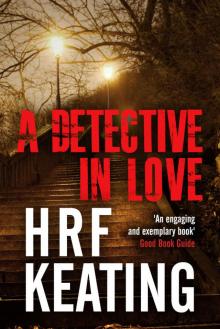 A Detective in Love
A Detective in Love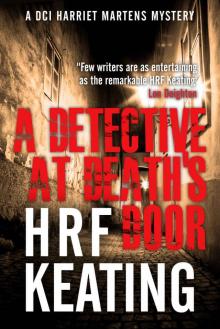 A Detective at Death's Door
A Detective at Death's Door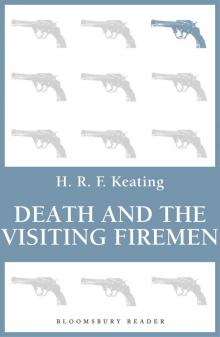 Death and the Visiting Fireman
Death and the Visiting Fireman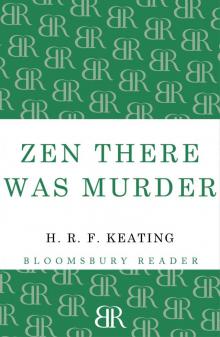 Zen there was Murder
Zen there was Murder